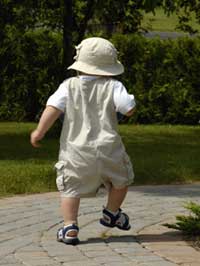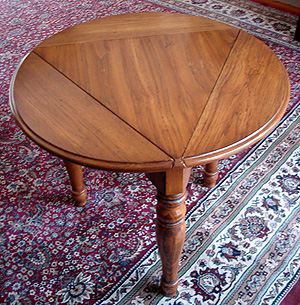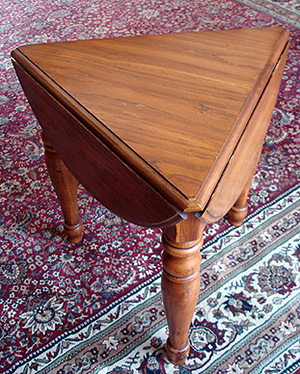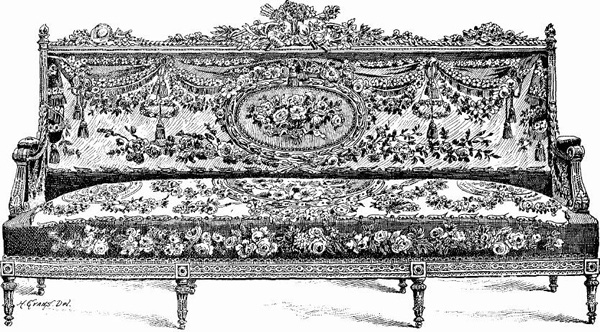The Power of Three
by Andrew Boyd
Today, the power of three. The University of Houston's College of Engineering presents this series about the machines that make our civilization run, and the people whose ingenuity created them.
"Why does a flamingo stand on only one leg?' Because if it picked up the other, it'd fall down. Or, so goes the old joke.
Standing on two legs is already tough enough. That's why children start out crawling. It's easy to stay balanced on all fours. Two feet is a different thing. We're not aware of it, but our body is constantly making minor adjustments to keep us from falling over.
 A child's first step is a marvelous and memorable moment. But watch as the child learns to put five or six steps together, or simply to stand without holding onto something. You can almost see the young mind working to keep the body balanced. If you want to really appreciate what a feat this is, try standing on your hands.
A child's first step is a marvelous and memorable moment. But watch as the child learns to put five or six steps together, or simply to stand without holding onto something. You can almost see the young mind working to keep the body balanced. If you want to really appreciate what a feat this is, try standing on your hands.
If we were born with three legs, standing wouldn't take all that effort. We don't make tables with one or two legs because they'd fall down. But add a properly situated third leg, and you have a nice, solid foundation.
Three is special in this regard. It's exactly the right number to define a flat surface or plane. It's impossible for a three legged table to wobble. Tables with four legs can, and often do. If the four legs are uneven, or if the floor's not flat, the table will wobble — resting first on one set of three legs, then tipping to another. Put more than four uneven legs on a table, and it can wobble every which way, always seeking to rest on three legs.
With all that potential for wobbling, why do most tables have four or more legs? The answer has to do with stability.
Imagine, for example, a circular table with three legs. If you lean on an edge of the table, you can cause it to tip over. The problem's especially bad if you're situated directly between two legs. The more legs you add around the edge of a circular table, the harder it is to tip over.

This wouldn't be a problem if the table were triangular. One leg on each corner is as stable as you can get. And, with three legs, it can't wobble. Sounds perfect. So why don't we see more three legged, triangular tables?

Well, eating at a triangular table would be different to say the least. But there's an even more basic reason.
We live in a world of rectangles. That's the shape of the rooms and doors in our homes. Our bookcases, countertops, dressers, washers, dryers, beds, nightstands, couches and chairs — rectangles surround us. Rectangular tables just fit more easily into this rectangular landscape.
Of course, this begs the question: why did we create such a rectangular landscape? I'll leave that for you to ponder.
I'm Andy Boyd at the University of Houston, where we're interested in the way inventive minds work.
Formally, three points define a unique plane if and only if they aren't on a line. Four or more arbitrary points lie on the same plane only when they're carefully chosen to do so — as when a furniture maker properly constructs a table.
The picture of the baby boy walking is from the web site of the Physiotherapy Foundation of Canada. The picture of the sofa is from Wikimedia Commons. All other pictures by E. A. Boyd.
